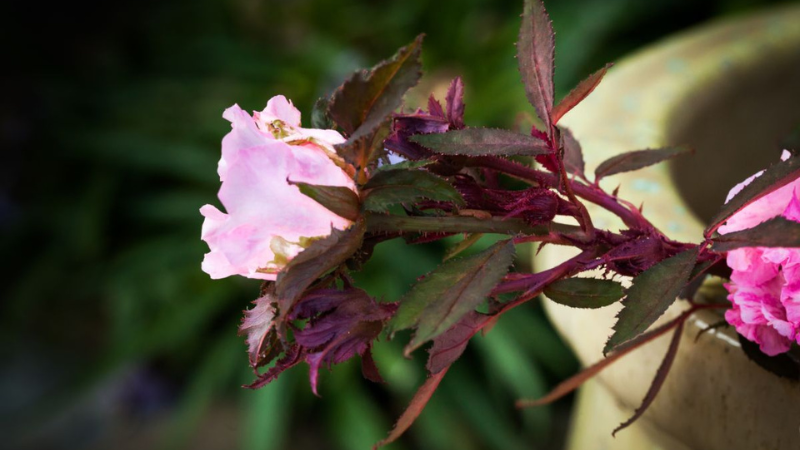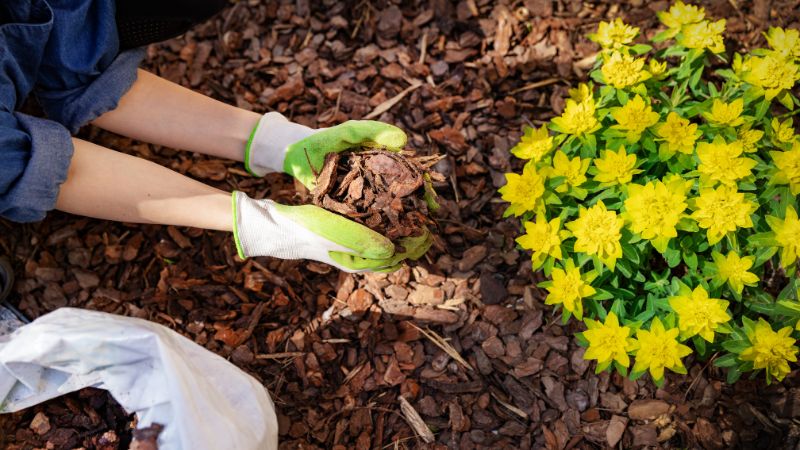Rose rosette disease (RRD) is a serious threat to rose gardens, causing symptoms like abnormal growth and discolored leaves. To safeguard your roses from this destructive disease, it’s important to adopt several preventive measures. Here are eight effective ways to protect your roses against rose rosette disease.
Cut Off and Destroy Any Infected Rose Parts

The most effective strategy to manage rose rosette disease is to promptly remove and destroy any infected parts of your roses. Research indicates that if you cut away the affected sections when symptoms first appear, up to 68% of the roses may remain virus-free after a year. However, delaying this action for four to six weeks can lead to the disease spreading, affecting up to 72% of roses within the same period. Regularly inspecting your roses and acting swiftly can significantly reduce the impact of the disease.
68 Percent is a Pretty Decent Percentage
Creating physical barriers around your roses can help prevent the spread of rose rosette disease. Planting a live fence or a border of tall plants, such as ornamental grasses, can act as a deterrent for the disease. Researchers from the University of Tennessee Extension found that roses planted within and outside a ring of tall ornamental grasses had better protection against RRD. These barriers help in reducing the movement of infected mites between plants.
Ornamental Grasses to the Rescue
While growing ornamental grasses like Miscanthus might be challenging, incorporating mixed plantings around your roses can offer multiple benefits. Adding plants such as coneflowers, yarrow, Russian sage, and alyssum not only enhances the garden’s appearance but also provides natural pest control and reduces the chances of disease spread. These plants create a diverse environment that can help protect your roses from rose rosette disease.
Create Mixed Plantings Around Your Roses

For additional support in managing rose rosette disease, consider reporting any cases to Roserosette.org. This organization focuses on studying the disease and developing resistant rose varieties. By sharing your observations and cases, you contribute valuable data to their research, which can help in developing better management strategies and resistant plants for future use.
Clean Off Your Rose Pruners Between Roses
Maintaining cleanliness of your gardening tools is crucial to prevent the spread of rose rosette disease. The virus can be transmitted through grafting and the use of contaminated pruners. To avoid this, wipe your pruners with 70% rubbing alcohol or spray them with Lysol between use on different roses. Ensuring that your tools are disinfected between cuts helps prevent cross-contamination and reduces the risk of spreading the disease.
Avoid Leaf Blowers
Using leaf blowers around your roses can inadvertently spread disease-carrying mites through the wind. To minimize this risk, avoid using leaf blowers in your garden. Instead, opt for a broom to clean your garden walkways and remove debris. This simple change can help prevent the dispersal of mites and reduce the potential for disease spread.
Give Your Rosebushes Some Space

To limit the movement of mites between rosebushes, it’s important to space your roses adequately. Increasing the distance between each bush makes it harder for mites to transfer the disease from one plant to another. Incorporating perennials around your roses can also help in creating a more effective barrier and providing additional protection against disease spread.



